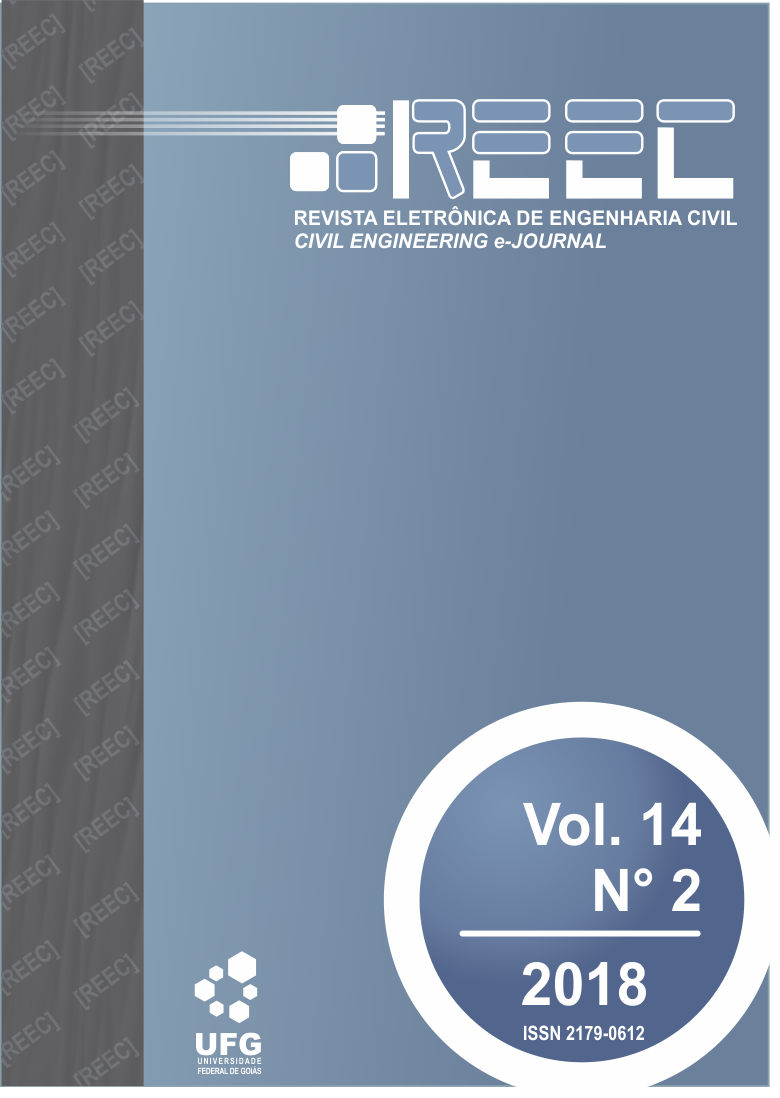Contribuições ao estudo de microestruturas reforçadas [Contributions to the Study of Reinforced Microstructures]
DOI:
https://doi.org/10.5216/reec.v14i2.46987Abstract
Este artigo trata da análise da microestrutura de materiais compósitos com matriz metálica (CMM), os quais têm grande aplicabilidade na Engenharia Estrutural. Para isso, são considerados os processos dissipativos de plastificação, que ocorrem na matriz, e de descolamento, que ocorrem na região de interface matriz/inclusão, onde a influência de tais processos na resposta macroscópica do material será investigada. Para as simulações numéricas do comportamento estrutural de CMM, o modelo de von Mises é utilizado na modelagem da matriz e um modelo de fratura coesiva é utilizado na simulação do processo de descolamento na interface. A inclusão é considerada elástica com grande rigidez. Contudo, os processos dissipativos que ocorrem na microestrutura e que repercutem no comportamento macromecânico do material são analisados através de uma modelagem na microescala utilizando um processo de homogeneização baseado no conceito de Elemento de Volume Representativo (EVR) e no Método dos Elementos Finitos (MEF). A tensão e deformação são médias volumétricas dos respectivos campos microscópicos sobre o EVR. O objetivo geral é verificar as potencialidades e limitações do emprego da modelagem proposta para futuros aperfeiçoamentos de compósitos de matriz metálica para aplicação na engenharia.
Abstract
This paper deals with the analysis of the microstructure of metal matrix composites (MMC) and its application in Structural Engineering. For this reason, it is considered the dissipative processes related to plasticity, which occurs in the matrix, and the phase debonding that occurs in the matrix/inclusion interface region, where the influence of such processes on the macroscopic response of the material will be investigated. For the numerical simulations of the MMC structural behavior, the von Mises model will be used in the modeling of the matrix and a cohesive fracture model will be used in the simulation of the phase debonding process. Inclusion will be considered elastic with high rigidity. However, the dissipative processes that occur in the microstructure and that affect the macromechanical behavior of the material will be analyzed through a microscale modeling using a homogenization process based on the concept of Representative Volume Element (RVE) and the Finite Element Method (FEM). The strain and stress are volumetric average of the respective microscopic fields on the EVR. The major goal is to verify the potentialities and limitations of the use of the proposed modeling for future improvements of metal matrix composites to apply in engineering.
Downloads
Downloads
Published
How to Cite
Issue
Section
License
Autores que publicam nesta revista concordam com os seguintes termos: Autores mantém os direitos autorais e concedem à revista o direito de primeira publicação, com o trabalho simultaneamente licenciado sob a Licença Creative Commons Attribution que permite o compartilhamento do trabalho com reconhecimento da autoria e publicação inicial nesta revista.
![[REEC] Revista Eletrônica de Engenharia Civil](https://revistas.ufg.br/public/journals/30/pageHeaderLogoImage_pt_BR.png)



